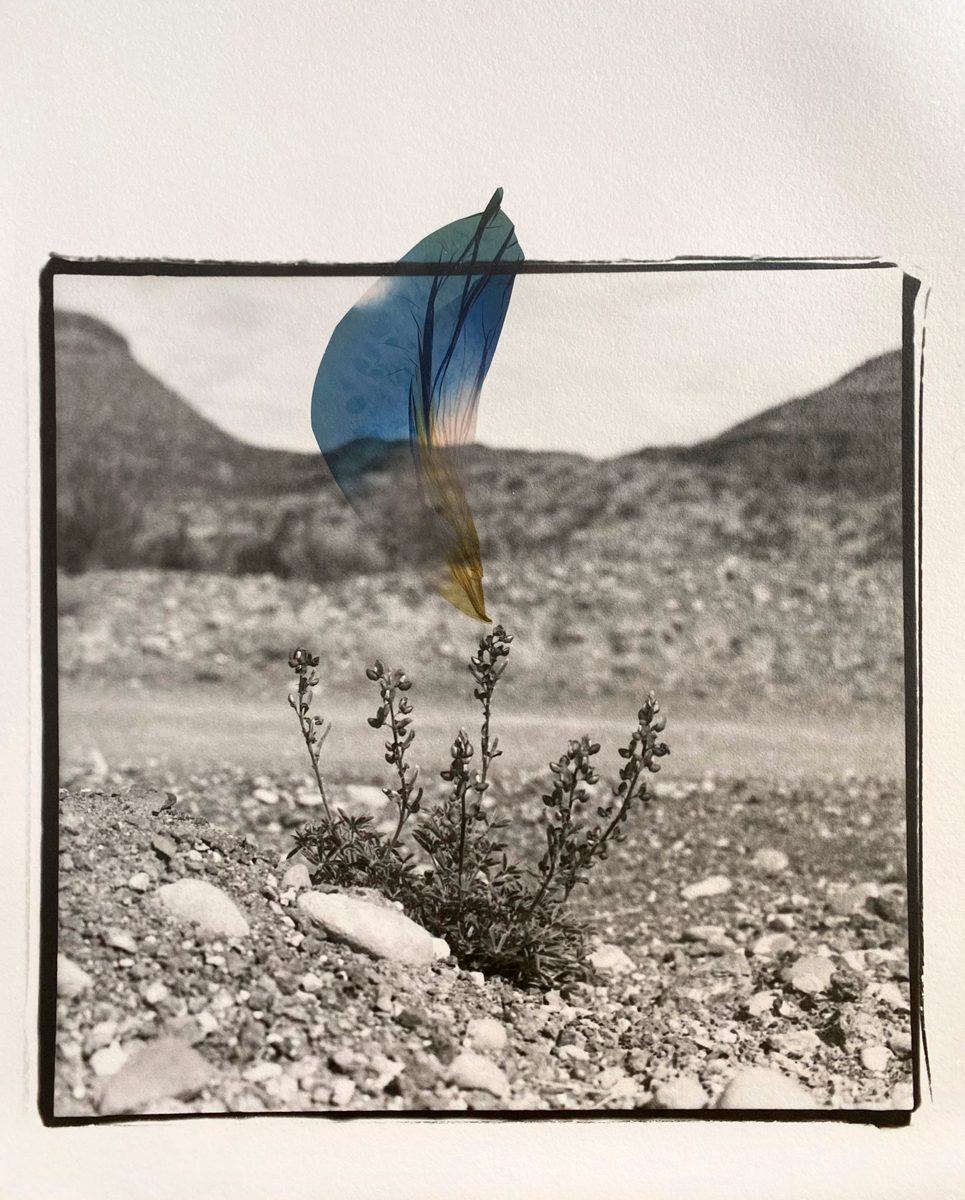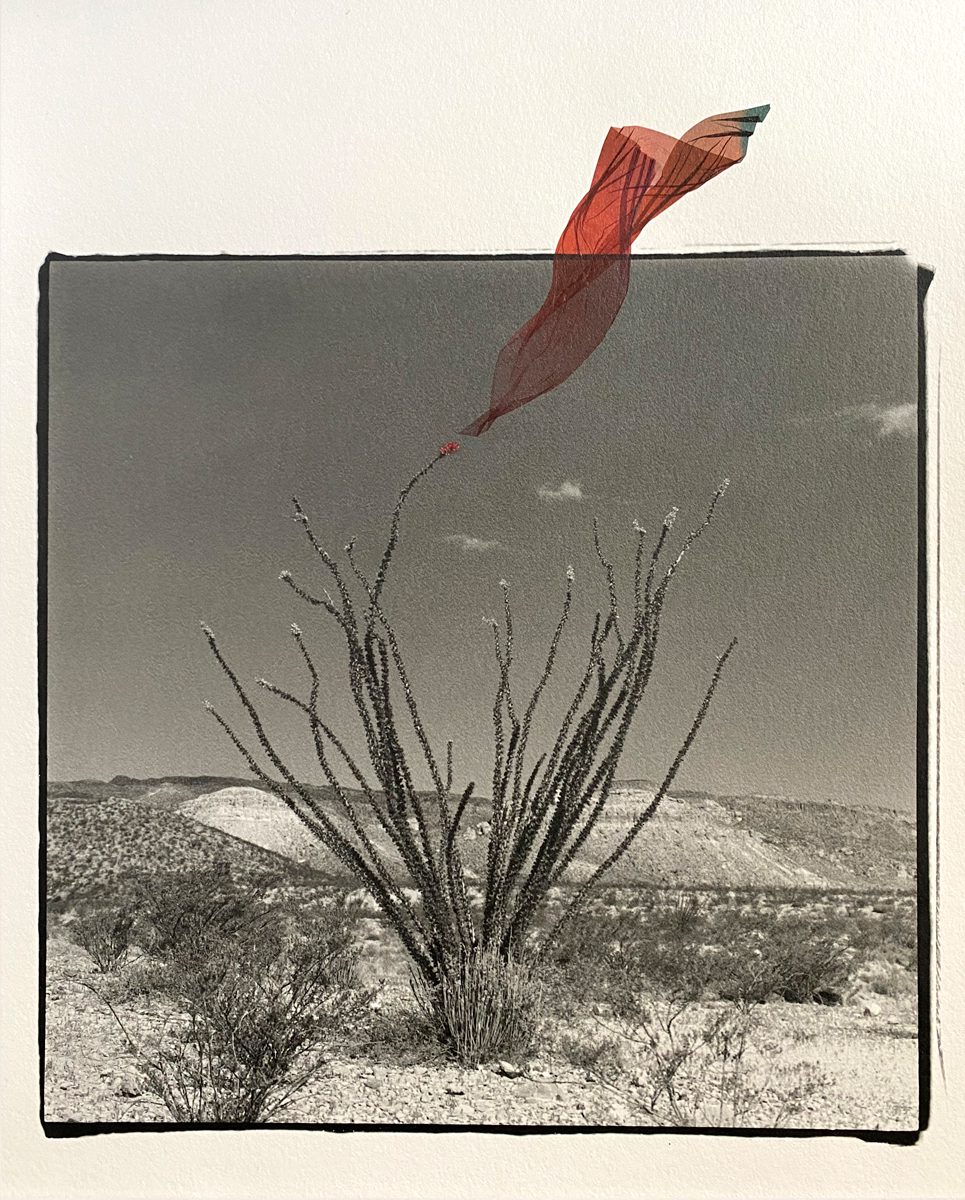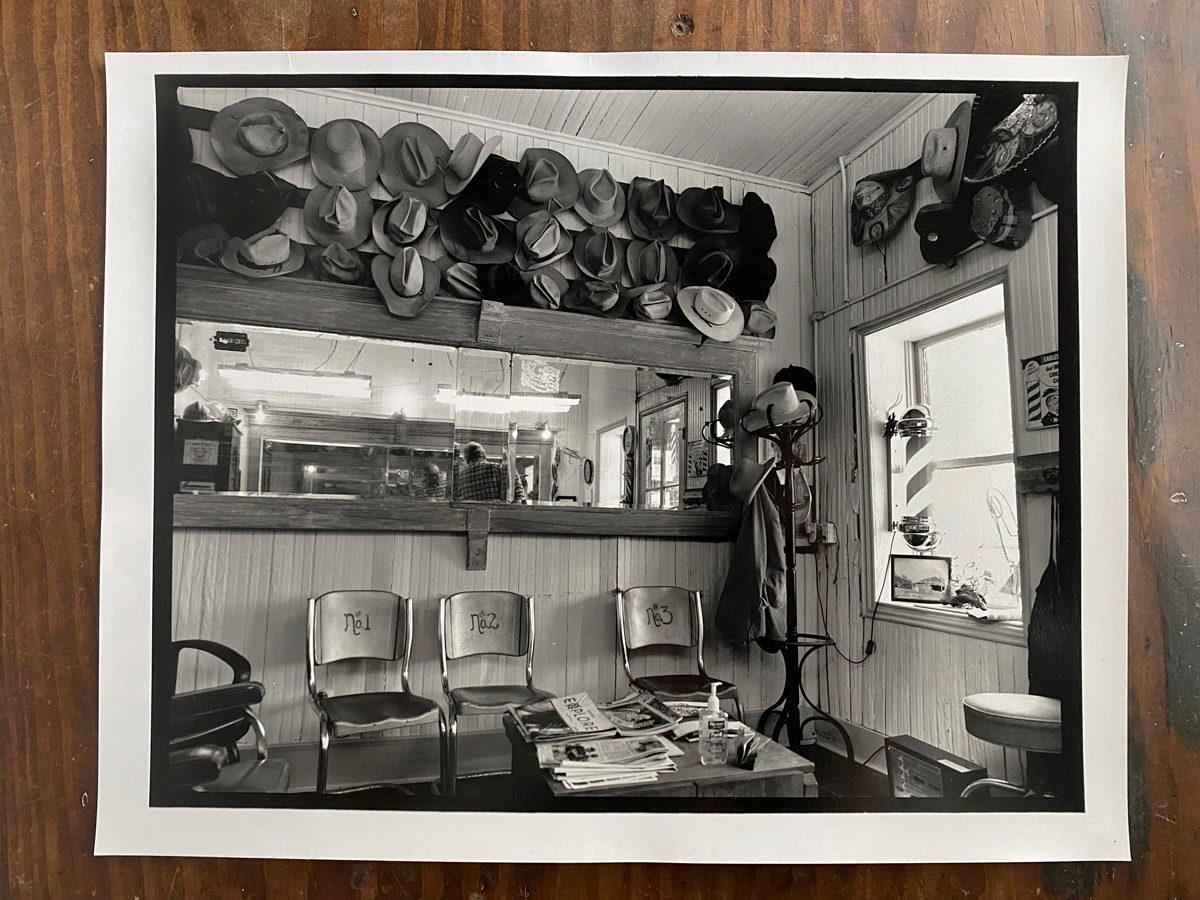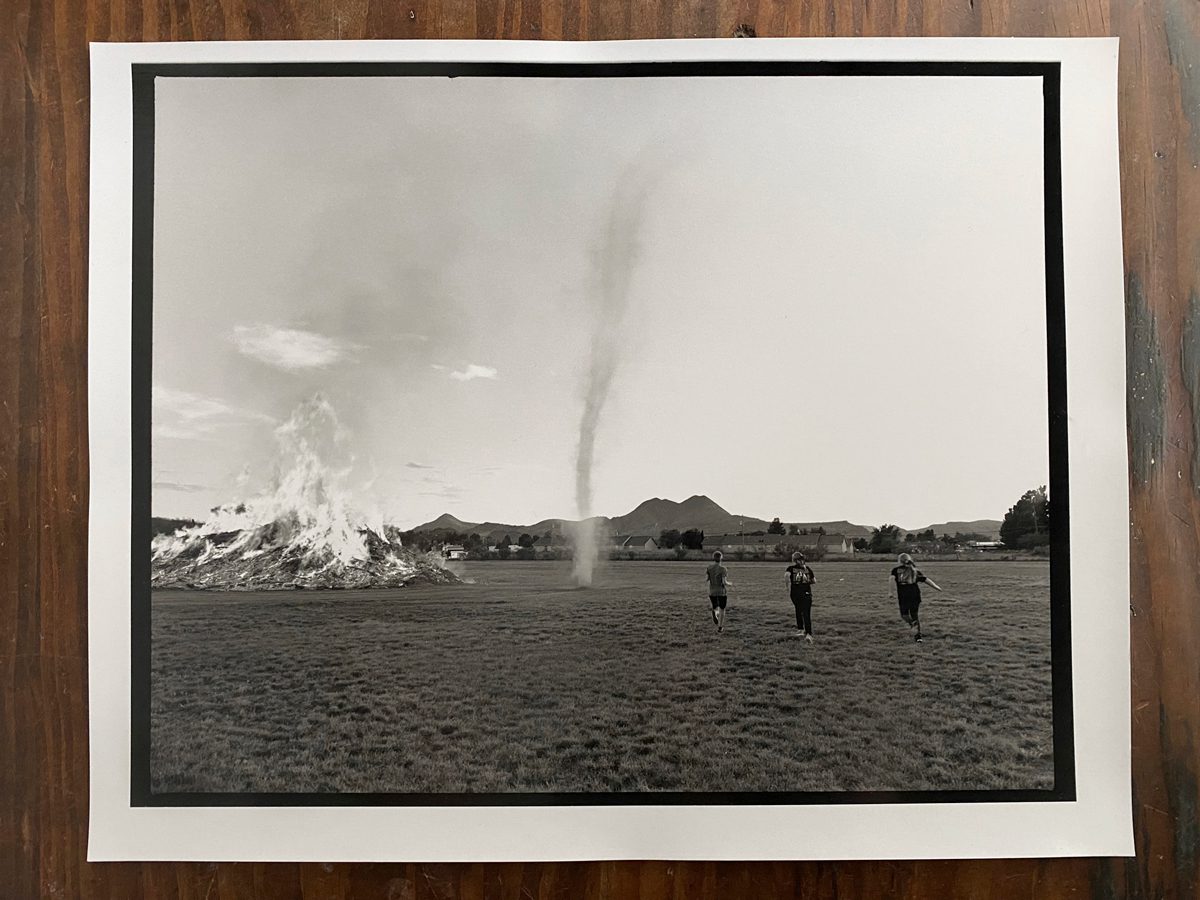“I’ll just fix it in the darkroom" Posted On 12th September 2023 To Magazine & Stories

“I’ll just fix it in the darkroom.” is the motto I’ve lived by for decades.
I Was Too Deep Into Analog
Studying photojournalism in the late 80s, I was taught to print well but never learned advanced printing techniques because we were being prepared for quick turn-around journalism assignments. Commercially available digital photography was in its infancy, so it wasn’t on my radar, and even when it became standard, I was too deep into analog to have any interest. I shot for a local paper for several years, a weekly, alternative publication that let me go the very untraditional route of shooting with my medium format Holga camera. And this is where my motto took hold… “I’ll just fix it in the darkroom!” because my negatives were always so bad! And for decades, I printed this way, honing my skills to tackle extremely challenging negatives to get good prints.
Remote Region of Texas
In early 2018 I moved from Austin, Texas to a small, rural town in far southwest Texas that shares the Chihuahuan Desert with Mexico and finally retired the Holga. I set up a darkroom in my house and began shooting with a Pentax 67. With this camera I started recording life around me, the people, the landscape, all the fun experiences I was having discovering this new life I had created for myself. The pandemic tossed me from that life into a creative meltdown because now it was all shut down, cut off, gone. I felt so untethered. I knew I had to figure out a project to focus on. One that felt fresh, but still expressive of my experiences in my quiet life in the remote region of Texas.
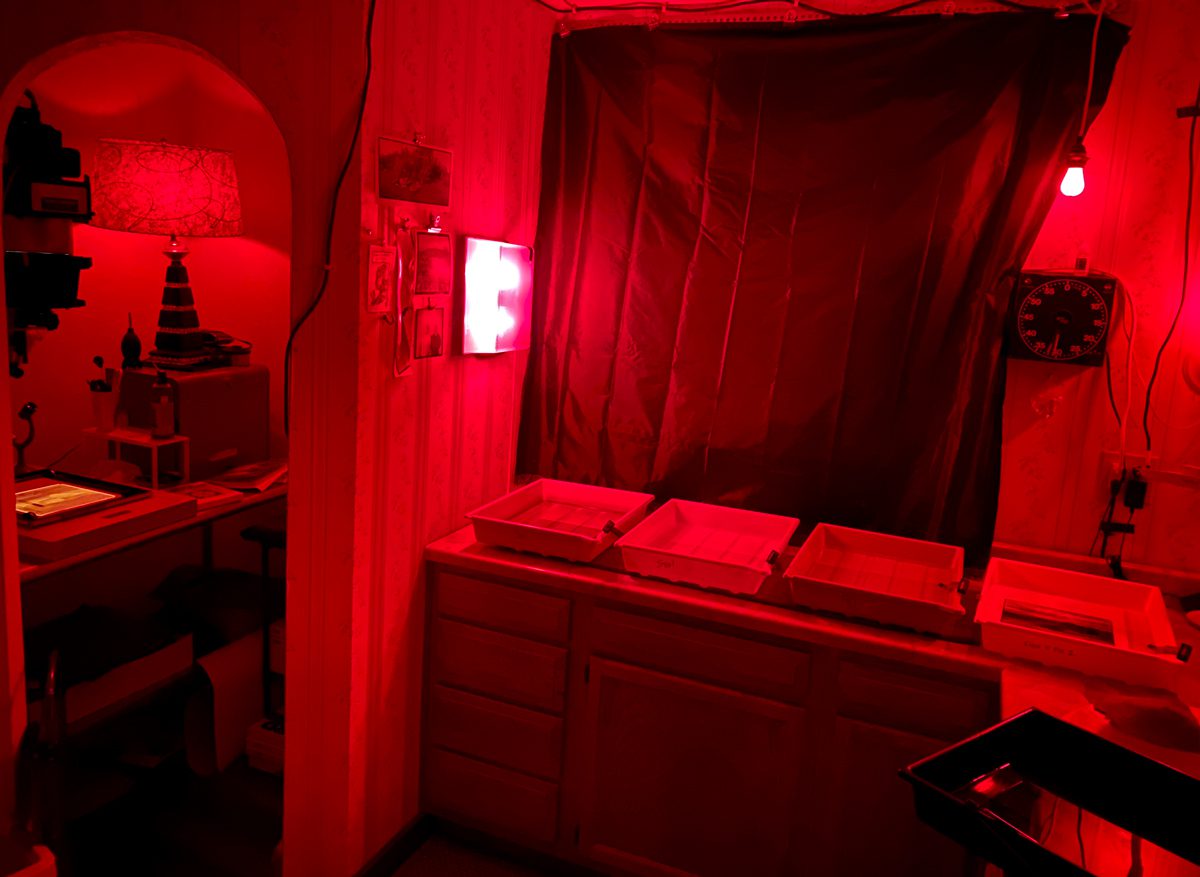
Darkroom with safelights on
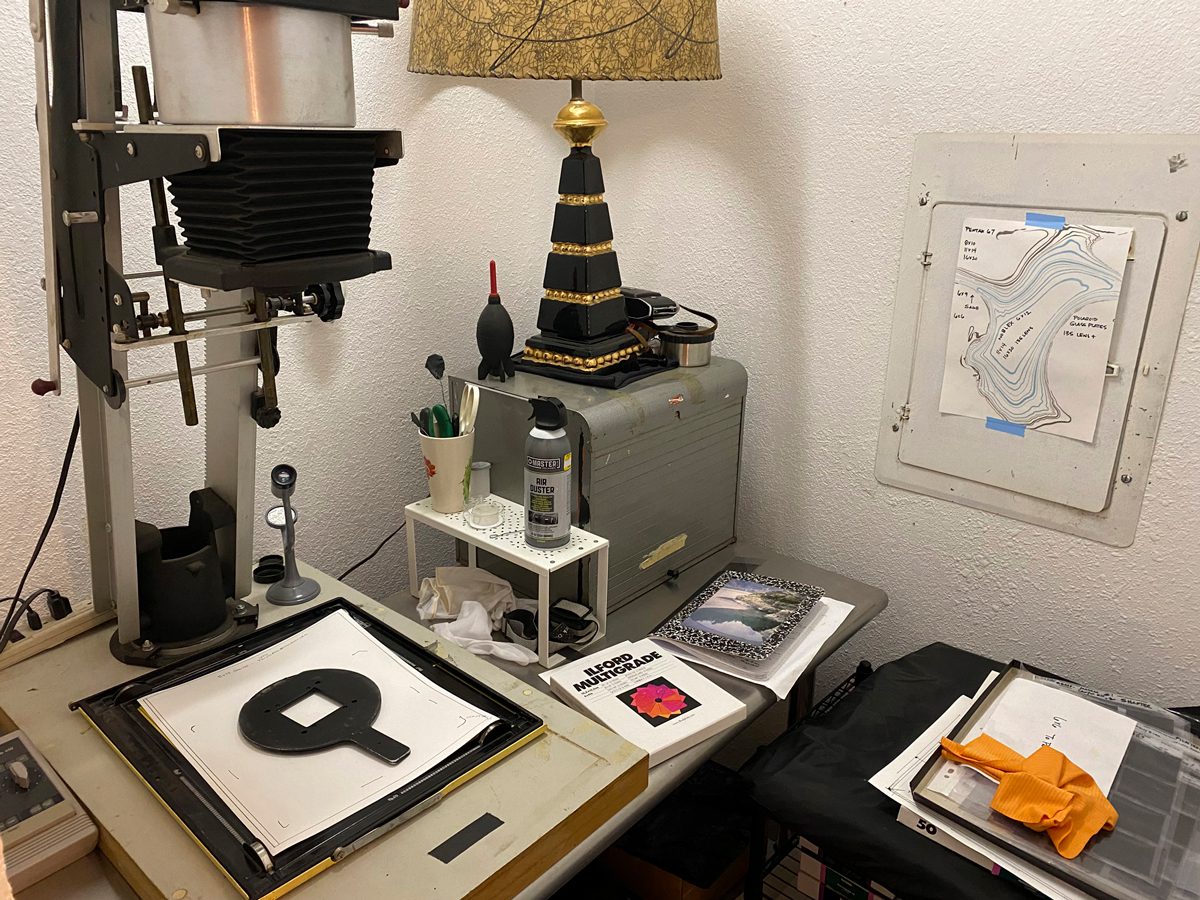
The enlarger closet nook!
Perfect Time to Learn
I dug out an old box camera I had buried in a closet, never looking at it carefully enough to realize it was a homemade pinhole camera lovingly made from a Sears Tower 120 camera from the late 1940s. I had never shot pinhole, but being isolated from humankind and feeling panicked about how to move forward in my photography, it seemed a perfect time to learn. So, I loaded it up with 120 film, bungee corded it to a tripod, and shot a roll, unintentionally kicking off what would become a series I’d work on through 2020 and 2021, and recently reviving it: ghostly self-portraits in locations I haunt frequently.
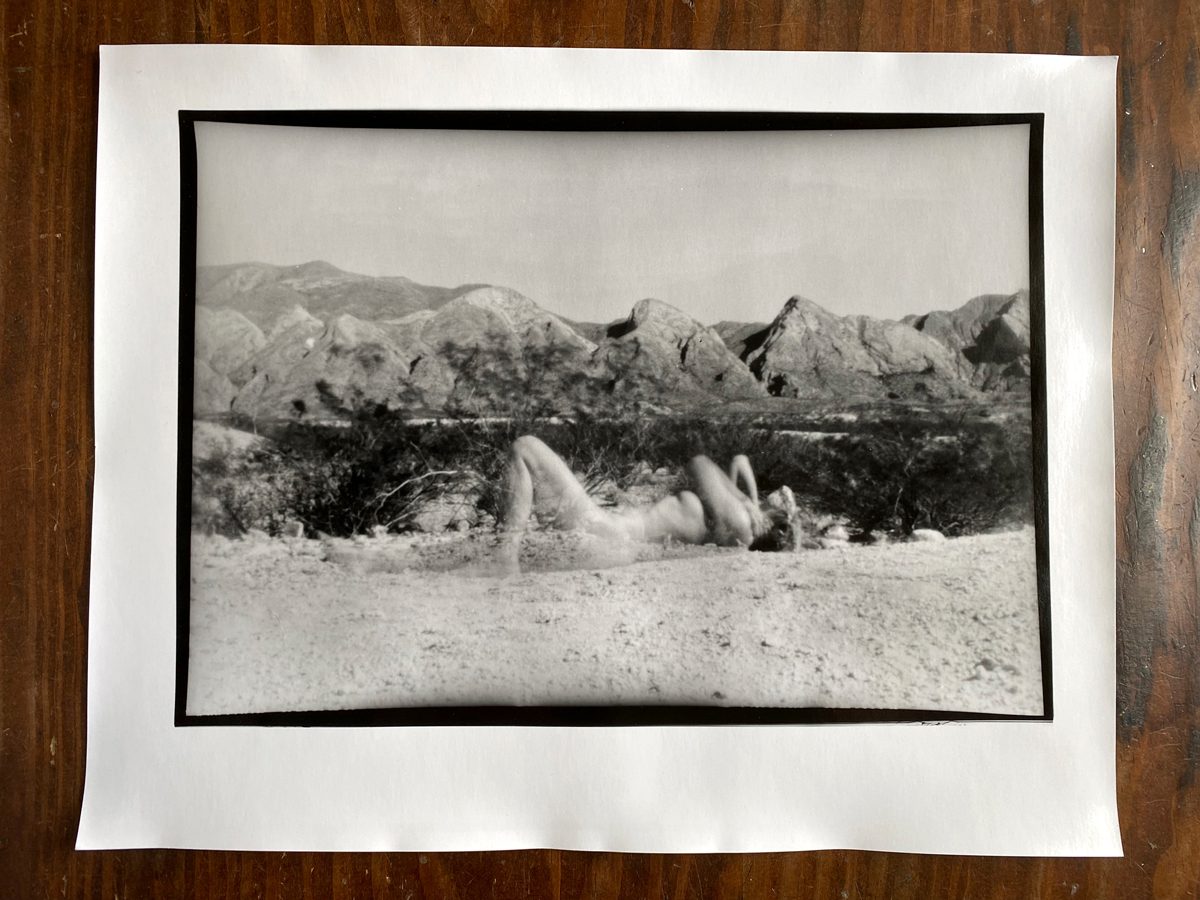
Pinhole darkroom print on ILFORD Multigrade FB Classic glossy
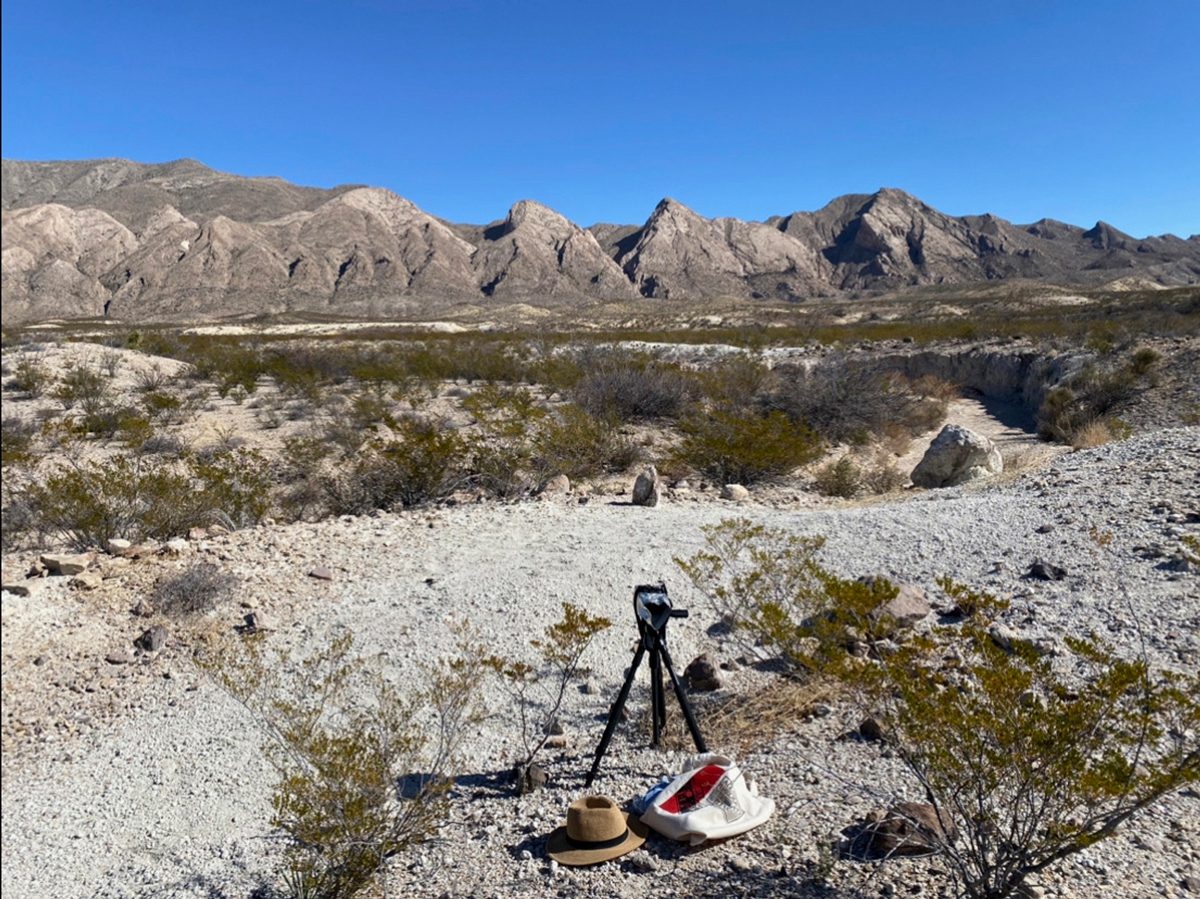
Location shot – pinhole camera set up for the previous image
Noblex 150 Pro
Concentrating on a body of work that was conceptualized and calculated and not the more documentary style I had been shooting for decades loosened up something in my mind and instigated an addiction many will relate to: collecting antique and vintage cameras. Exploring formats and paying attention to how each one rendered the scenes helped me organize ideas for projects, the camera chosen for the specific look I wanted. And then I bought the big daddy Noblex 150 Pro, a swing lens, panoramic, medium format camera. I wanted to use it to go beyond standard landscape photos the camera is known for. However, I couldn’t ignore the fact that I live in an extremely picturesque region, so I came up with a plan to somehow use the camera for self-portrait work using my presence in the landscapes to give scale and to connect my human experience with the land that feels like home.
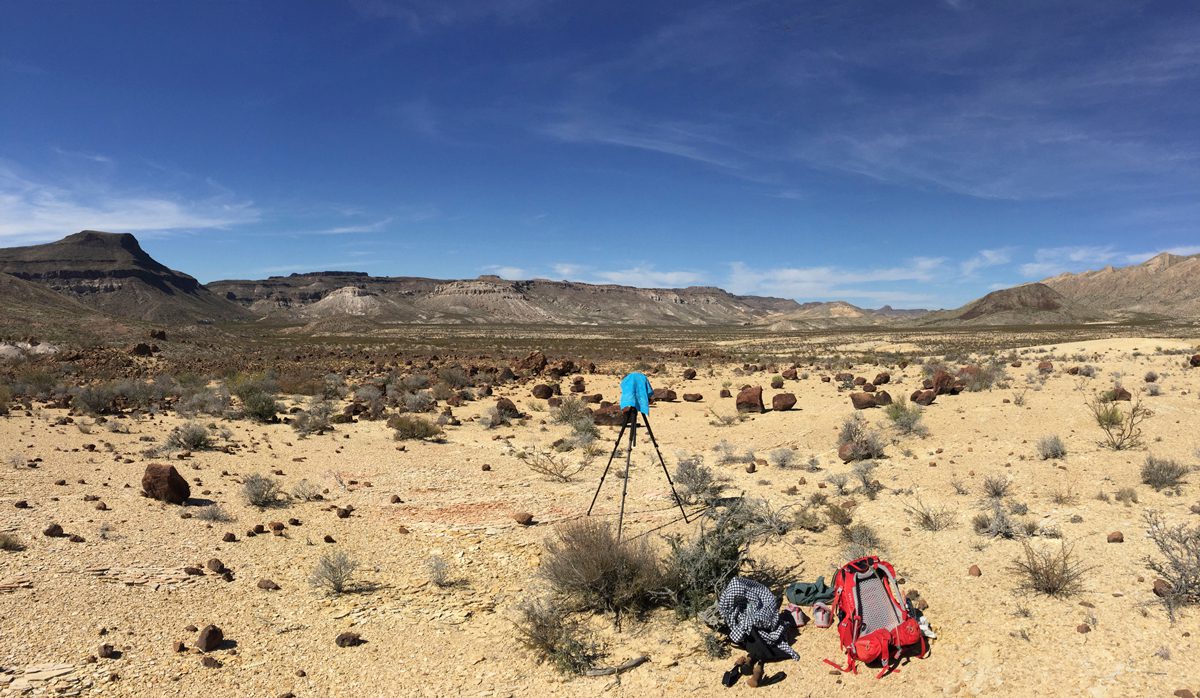
Location shot of nude in the desert! Noblex set up on tripod
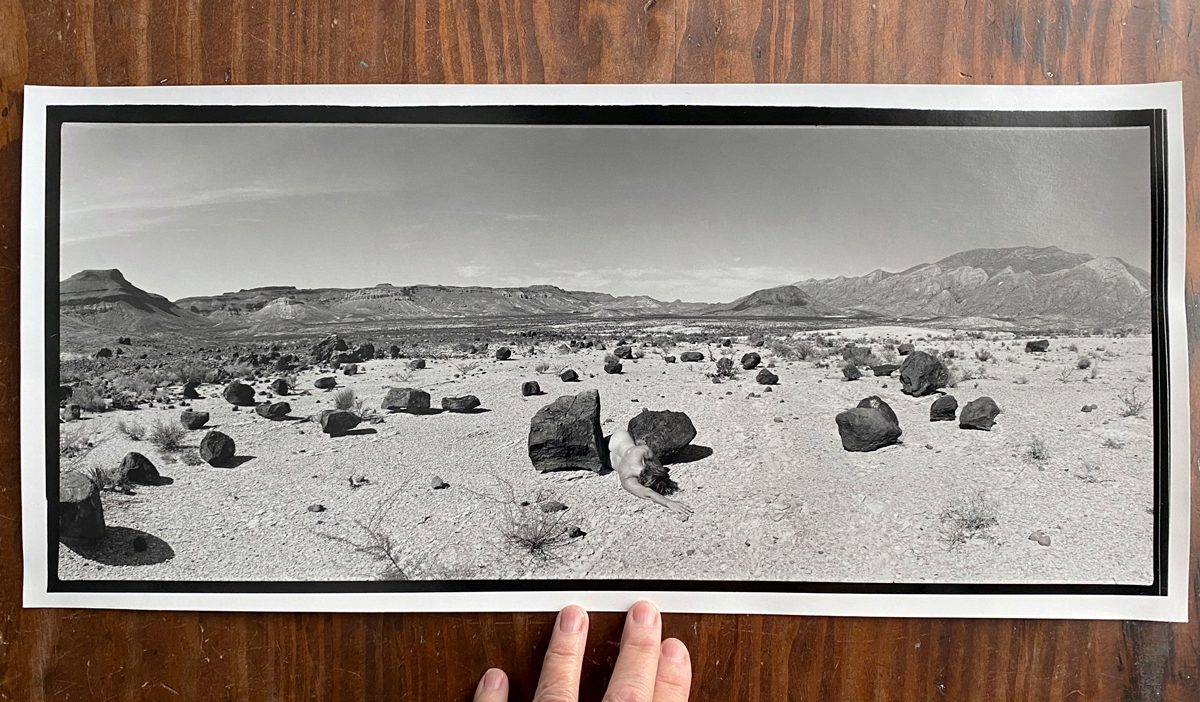
Self-portrait/nude between boulders: Noblex 150 Pro panoramic photo printed on cut down 16x20 ILFORD Multigrad FB Classic glossy
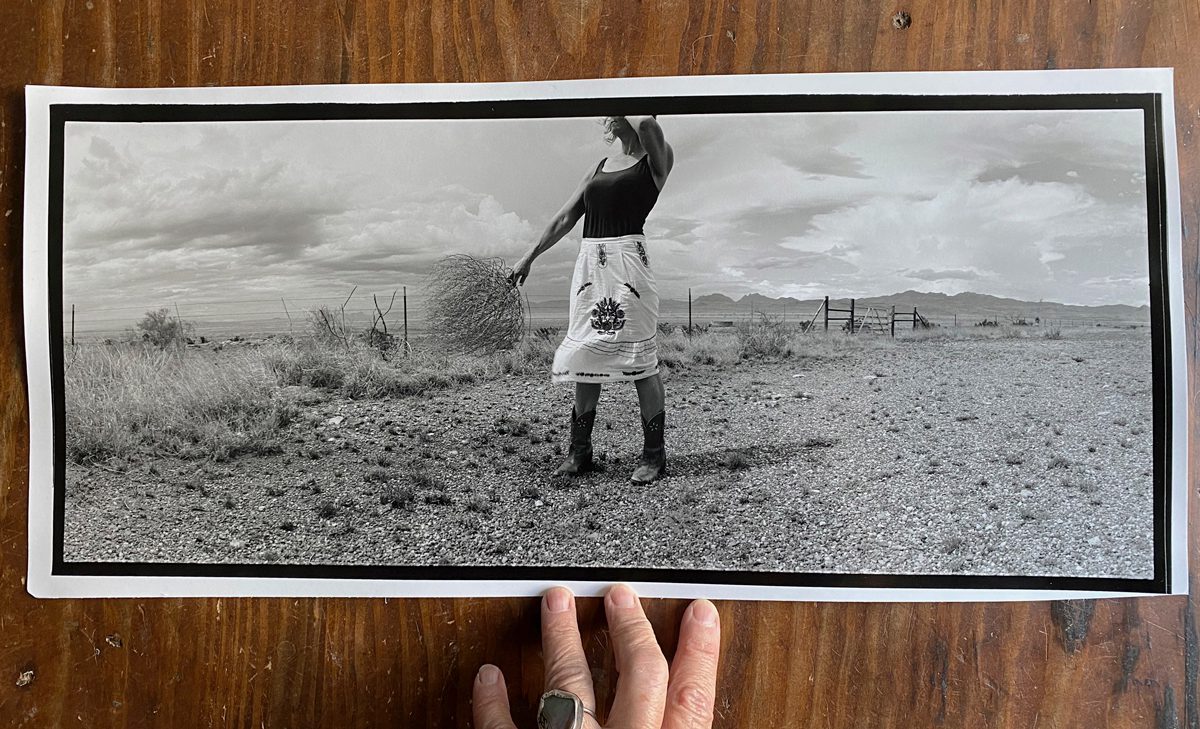
Additional shot: Self-portrait/holding a tumbleweed in monsoon season: Noblex 150 Pro panoramic photo printed on cut down 16x20 ILFORD Multigrad FB Classic glossy
Never Coming to an End
In the past two years, I’ve created a large body of work with the 6x12 format and started a handful of other significant projects currently being expanded in a circular way, like they all spin around me and I can pluck them down, borrowing a technique, an idea, or a subject from another, never coming to an end of a series completely, but building on it, using each project to jump off into another.
I was in love
The first time I saw a print on ILFORD Art 300, I was in love. Having always used ILFORD Multigrade FB Classic glossy, the Art 300 demanded a more sophisticated approach to achieve the results I was used to, so I knew it was time to learn more advanced techniques. I had heard about split-grade printing, but it sounded complicated; then I found the ILFORD article on split-grade printing by Dave Butcher, aka Darkroom Dave (https://www.ilfordphoto.com/split-grade-printing/), and it immediately made sense. Since I have a long history of darkroom work, my printing is almost intuitive at this stage, which is why split grade finally made so much sense and came easily. Split grade, where have you been all my life?
Making me adore Art 300 Even More
ILFORD Art 300 is a beautiful paper so perfectly suited to hand-coloring and to use as a canvas for other paper-based artwork. I love the warm colour and the textured surface that makes the light dance across it. I've been using the paper for a series on desert spirits, where I shoot plants and rocks as if making portraits, then adding Polaroid emulsion lifts in the colors the landscape and plants present in real life. The emulsion becomes part of the paper in a way I wasn't expecting, making me adore Art 300 even more.
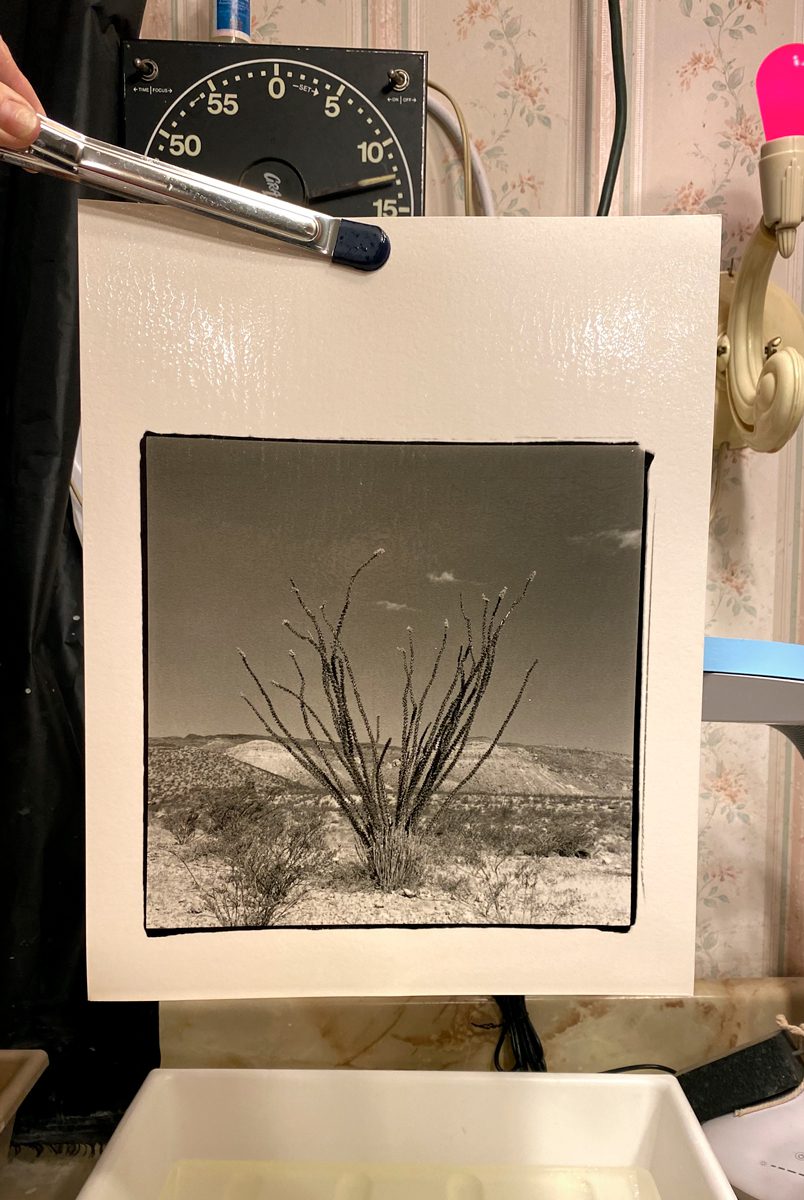
The print in the darkroom described below:
- Texas Bluebonnet with a blue and yellow emulsion lift applied: Pentacon Six image printed on ILFORD Art 300
- Ocotillo plant with red colored emulsion lift applied, hand tinted bloom: Pentacon Six image *ILFORD HP5 Plus!!- printed on ILFORD Art 300
Revolutionized my printing
I still shoot challenging negatives because I live where the lack of humidity causes sunlight so crisp and blindingly bright; high contrast negatives are the norm, but also because I don’t meter falling back on knowing I can probably fix it in the darkroom. Shooting with a Holga for so long either ruined me or made me very advanced! The split-grade method has revolutionized my printing and made for a lot less crazy dodging and burning.
- Jim’s Barber Shop: Pentax 67 image printed on 11×14 ILFORD Multigrad FB Classic glossy
- Kids running towards a dirt devil by the Alpine High School homecoming bonfire: Pentax 67 image printed on 11×14 ILFORD Multigrad FB Classic glossy
Suminagashi-style ink marbling
Split-grade printing is a powerful tool that has also allowed me to experiment with printing that might not be possible without it. A very recent experiment has been making paper negatives, doing Suminagashi-style ink marbling on top, then contact printing them on ILFORD Classic Matte Multigrade Fiber paper. The velvety emulsion is perfect for the look I was going for. The delicate ink patterns require a different exposure than the negative part of the paper, and achieving the inky black requires the magic of split grade printing.
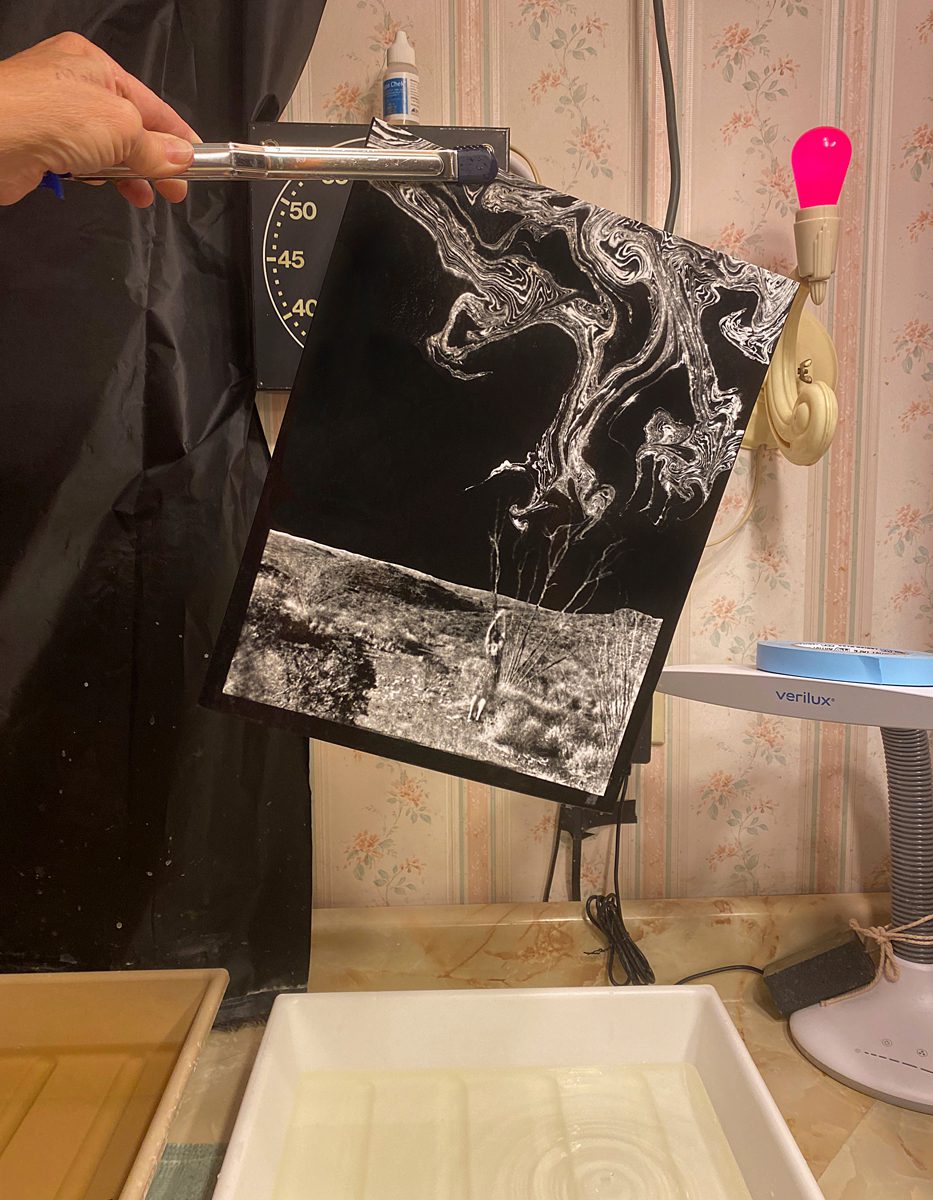
Photo of the contact print darkroom work- holding it above the fix!
Potassium Ferrocyanide
The last skill I picked up is local reduction using potassium ferricyanide to lighten areas on prints that were either too small to dodge or dried down darker than I anticipated. This technique has rescued many a print that might have ended up in the reject pile.
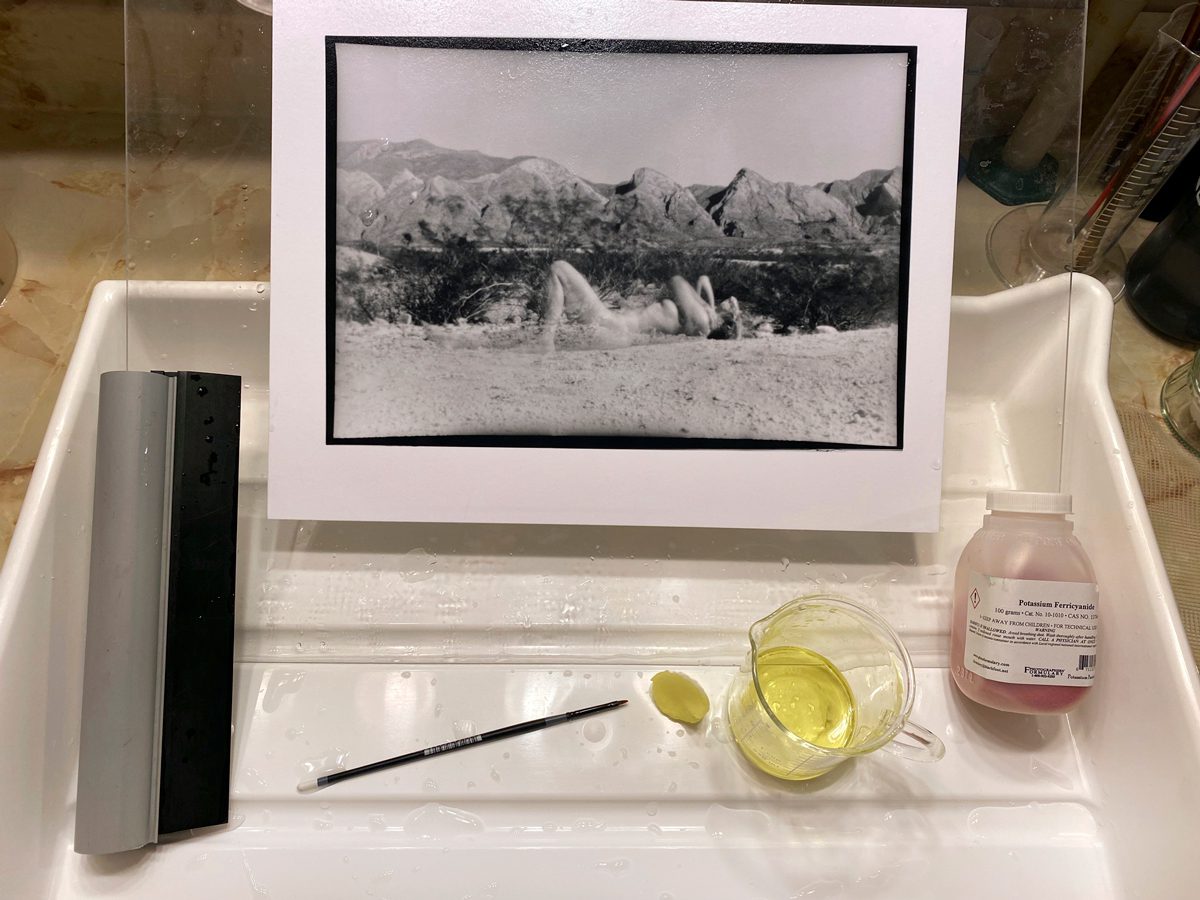
Local reduction set up- lightening up areas of the pinhole print on FB glossy
My Darkroom
My darkroom is set up in a very large bathroom in my house. I am able to provide a water source through the shower head for my archival print washer, high counters to set out trays, and a small closet perfect for my enlarger nook. A large print drying rack on wheels is perfect for a space where I need to move it often. I use an Omega D2 enlarger, a handful of 3D-printed negative carriers made to the specs I requested, a homemade carrier for my 6x12 negatives, and a filed-out 6x6 when I want a more organic border.
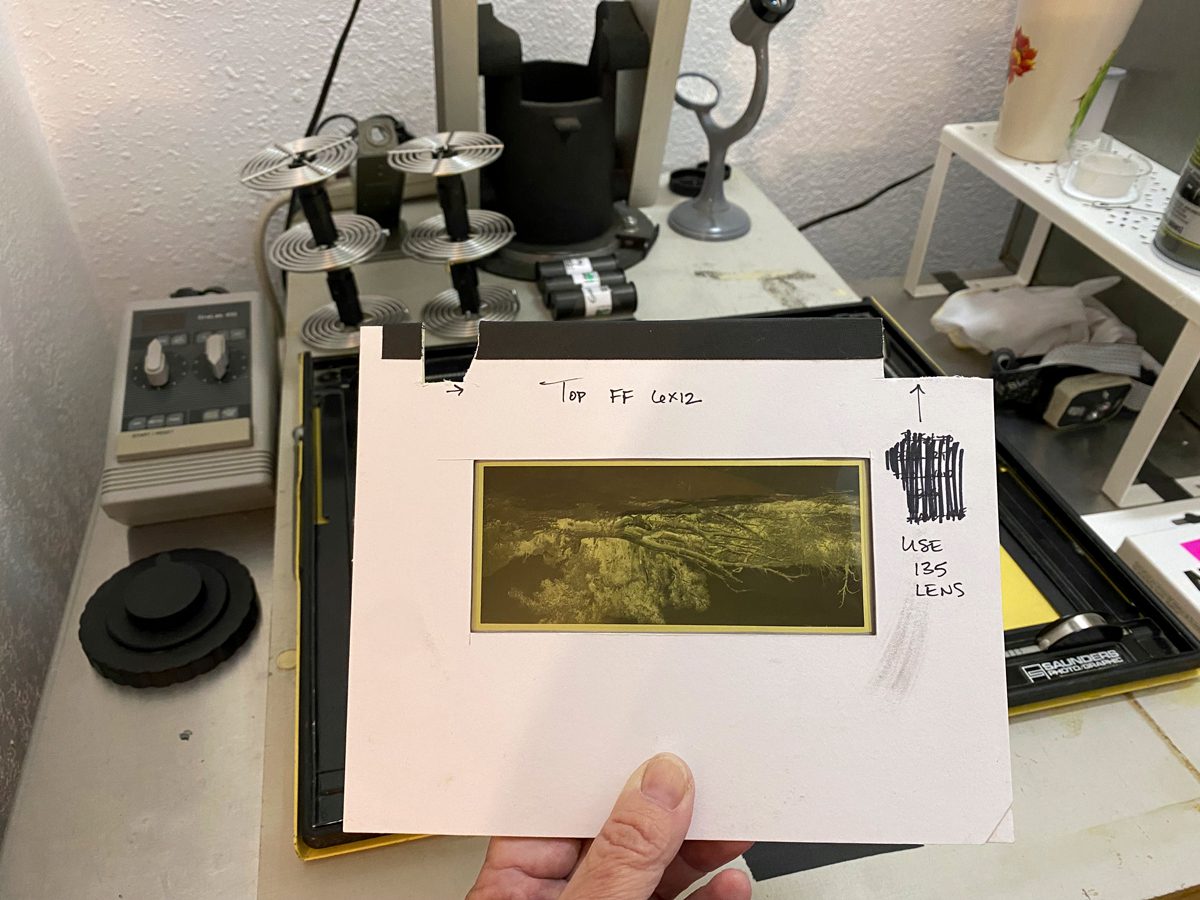
Handmade carrier for the 6x12 format (the negative in it was shot on ILFORD HP5 Plus!)
Magical Experience
I work with many formats and techniques, but they all share the common theme of desert life, my emersion in it, small-town living, and the deep connection I feel with it all. To be able to work in my darkroom, shut away from the world, seeing the magic of images appear in the developer, seeing the depth of a silver gelatin print versus looking at it on a computer screen from a scan will never cease to be a magical experience.
My Go-To
ILFORD paper developer, Ilfostop, ILFORD Rapid Fixer, and Wash Aid are my go-to chemicals, and ILFORD Multigrade FB Classic glossy and now Art 300 and matte surface are the papers I will always be loyal to. I’ve recently become a convert to ILFORD HP5 Plus!
Images ©Liz Potter
About The Author

Liz Potter
Liz Potter is an artist and photographer based in a remote small town in the southwest desert of Texas, USA. With a background in photojournalism, she also has a strong interest in art and how to use film photography and traditional printing methods to translate her deep connection with the land to share with others. She uses a variety of film cameras to explore both documentation and artistic expression. Traditional darkroom processes have been her main focus for decades, and she is currently working from her home lab in a bizarrely large 1980s bathroom.
Her latest work is photo-based multi-media, combining silver gelatin prints, cyanotypes, hand-tinting, Suminagashi, and emulsion lifts to express the beauty and wonder of the desert landscapes where she roams.
Website:|| http://www.lizpotterphotography.com
Instagram:|| @lizpotterphotography







